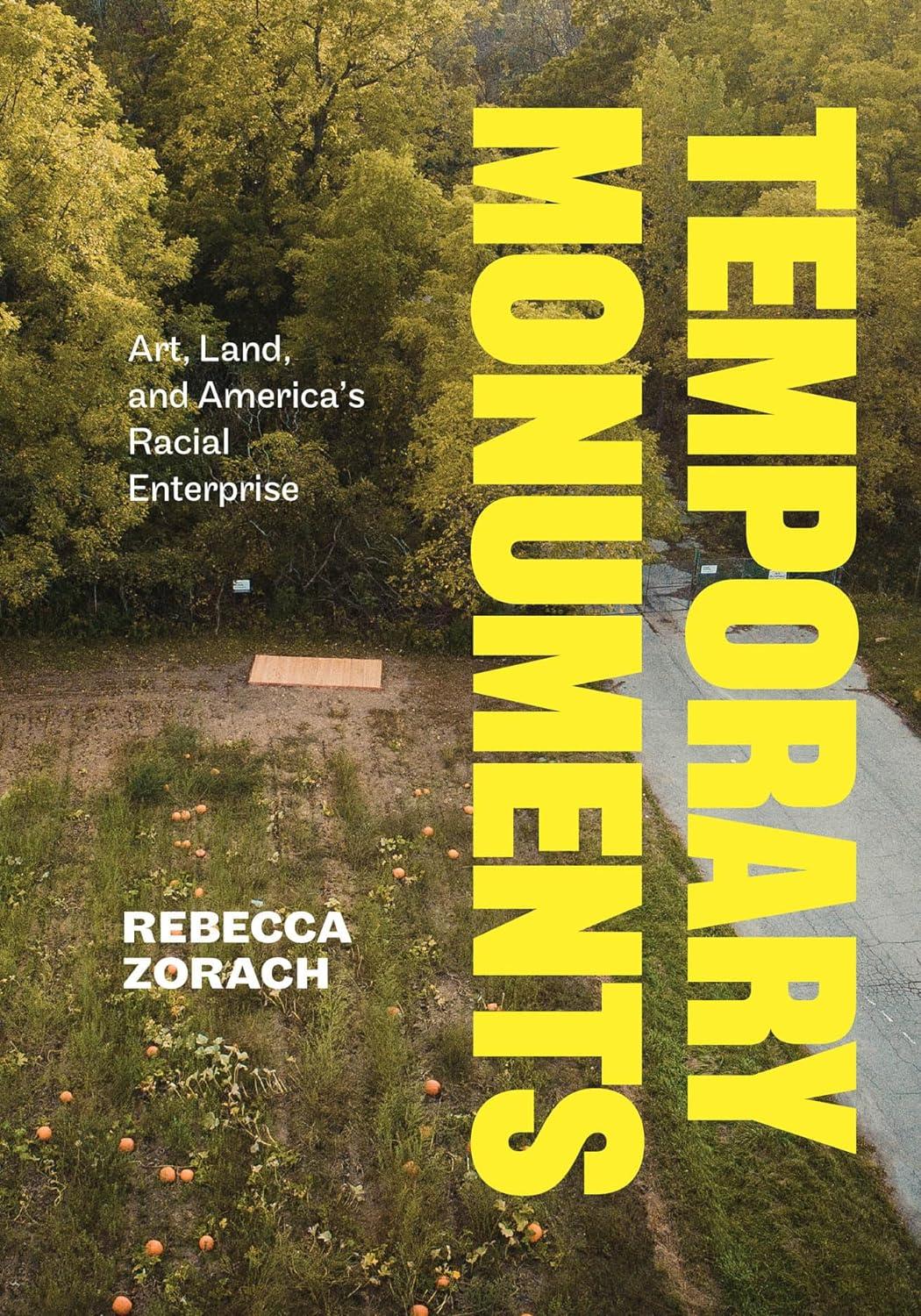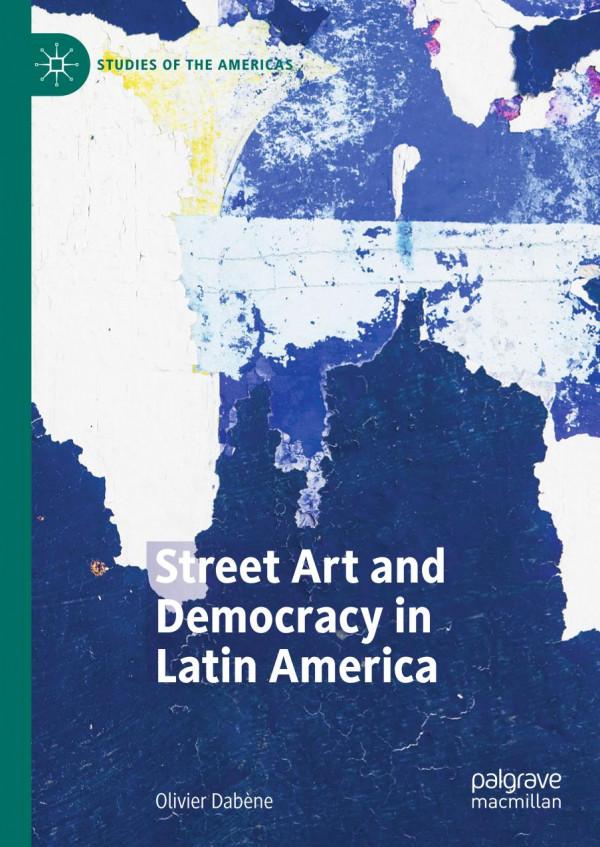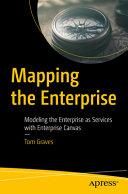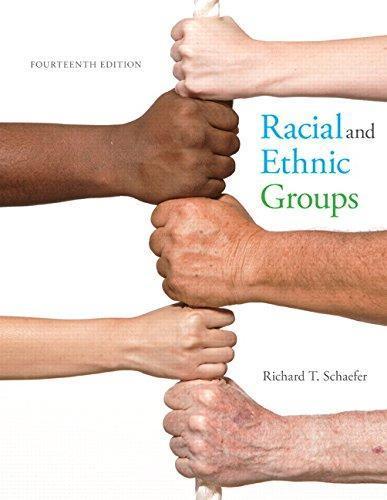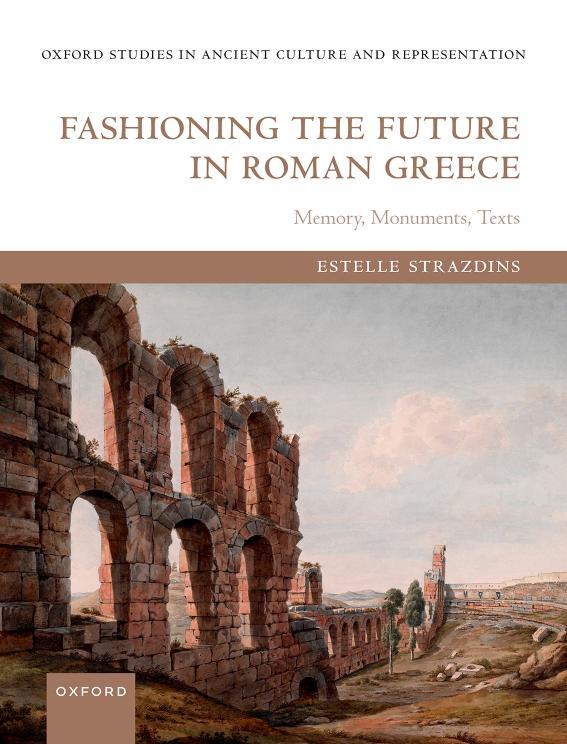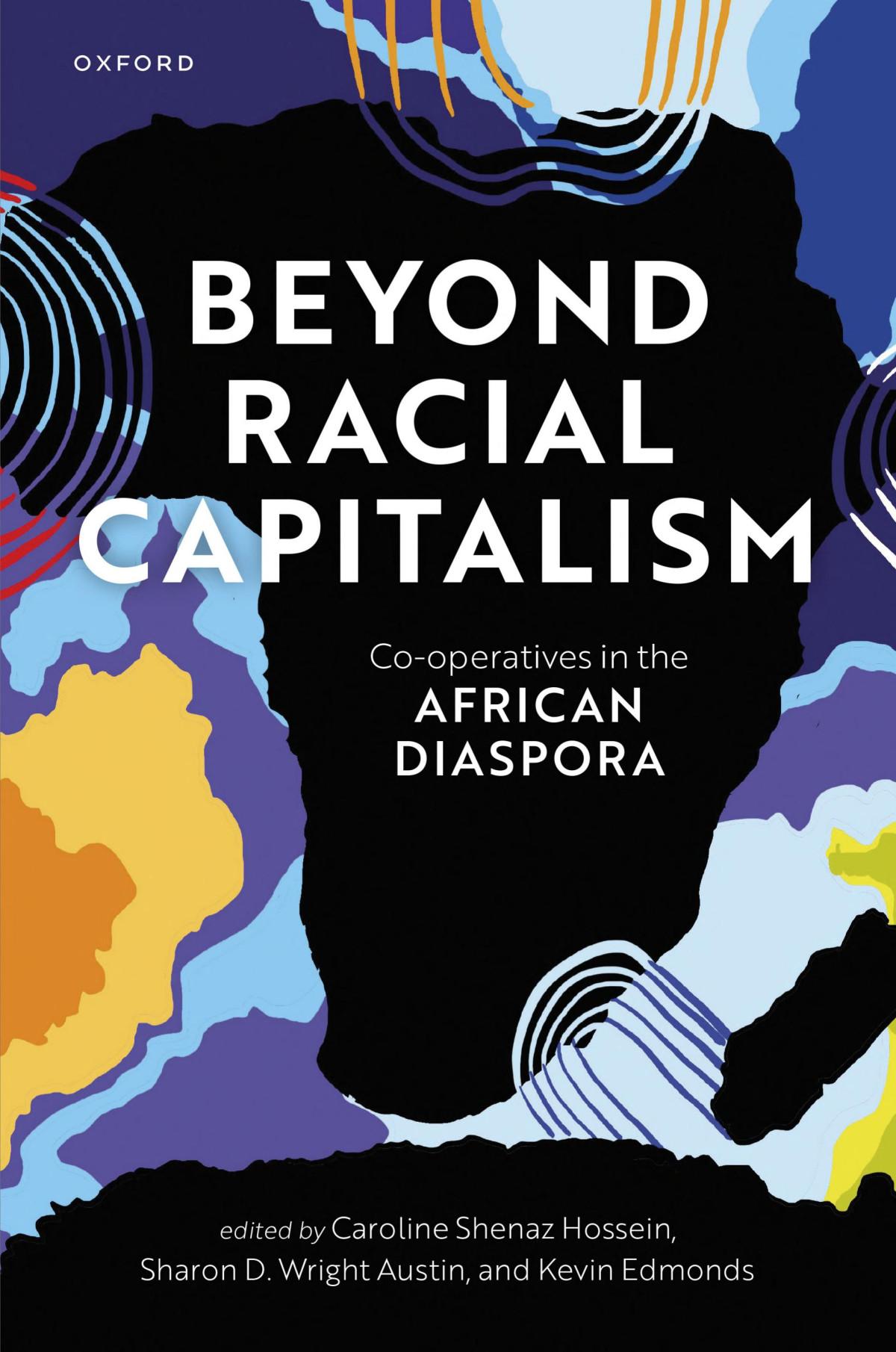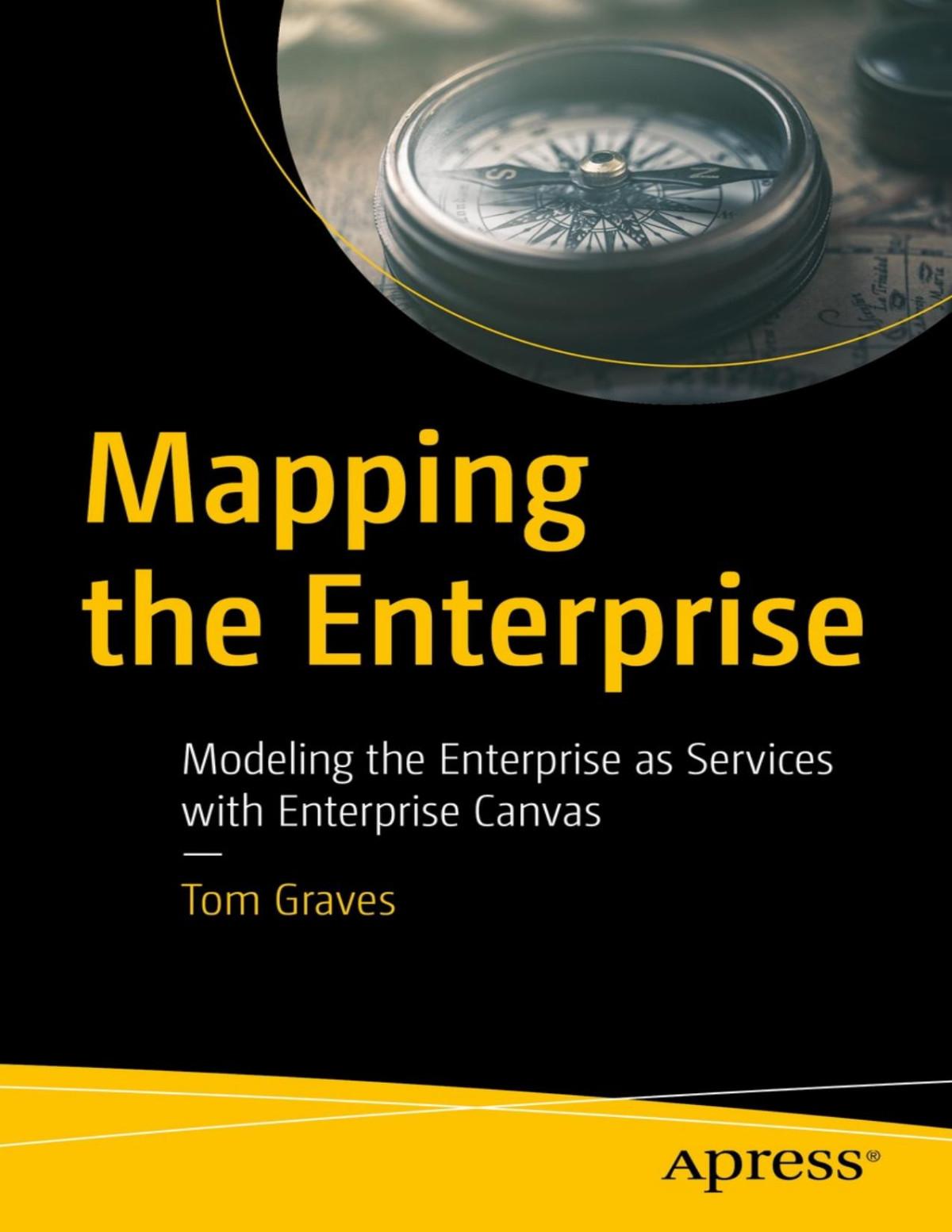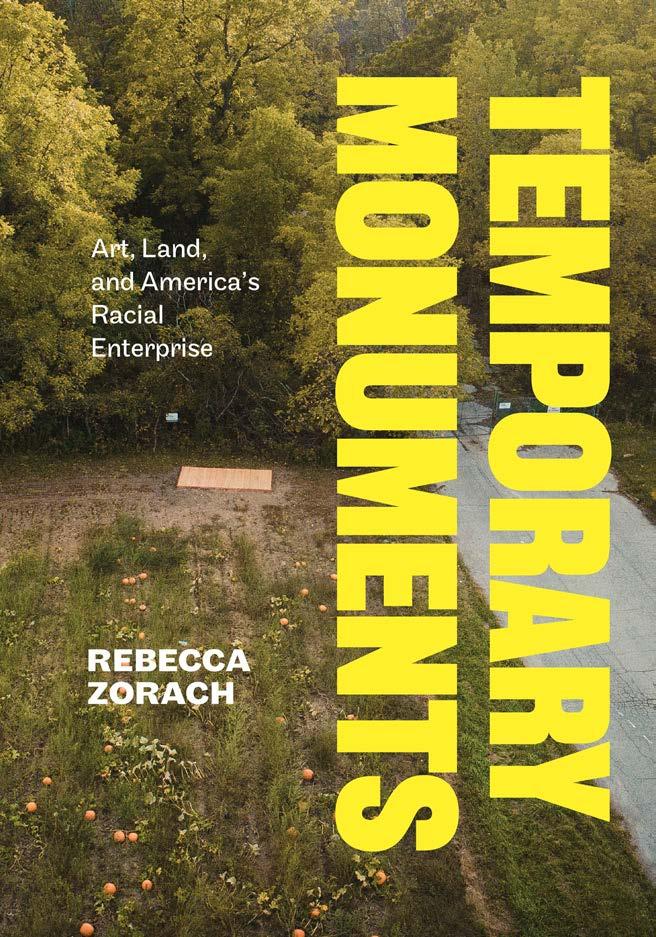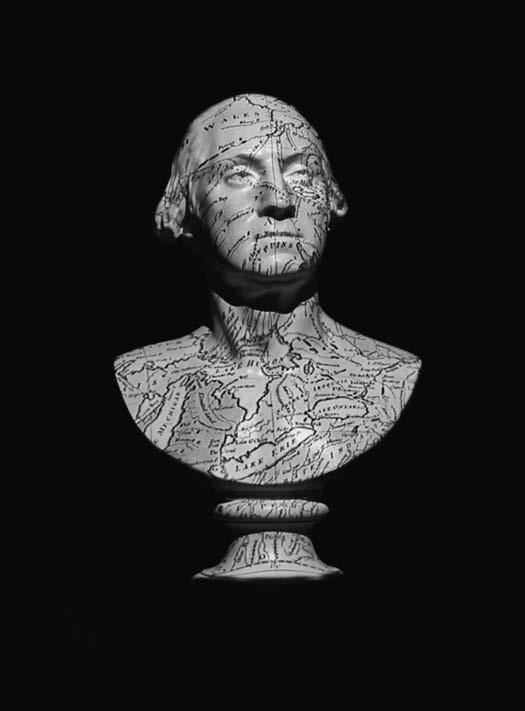CONTENTS
Illustrations
FIGURES
Figure 0.1 Image of George Floyd projected onto the statue of Confederate Gen. Robert E. Lee, Richmond, Virginia. Projection by Dustin Klein. Photo by Sandra Sellars.
4
Figure 0.2 Alan Michelson, Hanödaga:yas (Town Destroyer), 2018. 11
Figure 0.3 Digital collage of Identity Evropa posters, 2022. 18
Figure 1.1 Sèvres Porcelain Factory, Allegorical Figure of Peace, ca. 1780.
Figure 1.2 Peale Museum solicitation letter, with engraving titled Nature by James Akin (ca. 1801), 1815.
Figure 1.3 Charles Willson Peale, Staircase Group (Portrait of Raphaelle Peale and Titian Ramsay Peale I), 1795.
Figure 1.4 Rembrandt Peale’s original reconstruction of the position of mastodon tusks, from the Philosophical Magazine, 1802.
Figure 1.5 Charles Wilson Peale, Explanation of John Isaac Hawkins’s physiognotrace invention, 1803.
Figure 1.6 Moses Williams (presumed), Moses Williams, Cutter of Profiles, ca. 1803.
Figure 1.7 Rembrandt Peale (presumed), handpainted illustration from copy of his An Historical Disquisition on the Mammoth, 1803.
Figure 1.8 Skeleton of the mastodon at Philadelphia. From Samuel Griswold Goodrich, The First Book of History for Children and Youth, 1832.
29
34
35
37
41
41
41
42
Figure 1.9 François-Xavier Fabre, Joseph Allen Smith Contemplating Florence across the Arno, 1797.
Figure 1.10 Thomas Cole, Scene from “The Last of the Mohicans,” Cora Kneeling at the Feet of Tamenund, 1827.
43
50
Figure 2.1 Thoreau-Alcott House, photograph by John Phelan. 61
Figure 2.2 Romain Gavras, dir., No Church in the Wild music video, 2012, still. 68
Figure 2.3 Left: Romain Gavras, dir., No Church in the Wild music video, 2012, shot of Le Centaure Nessus enlevant Déjanire, Jardin des Tuileries, sculpture by Laurent Marqueste, 1892, still. Right: photograph by Natalia Wang.
Figure 2.4 Left: Romain Gavras, dir., No Church in the Wild, music video, 2012, shot of Cain, Jardin des Tuileries, sculpture by Henri Vidal, 1896, still. Right: photograph by Natalia Wang.
Figure 2.5 High5Collective (Jordan Riggs, dir.), No Church in the Wild, music video 2011, still. 74
Figure 2.6 Romain Gavras, dir., No Church in the Wild, music video, 2012, still. 75
Figure 2.7 Romain Gavras, dir., No Church in the Wild, music video, 2012, still. 76
Figure 2.8 High5Collective (Jordan Riggs, dir.), No Church in the Wild, music video, 2011, still. 77
Figure 2.9 High5Collective (Jordan Riggs, dir.), No Church in the Wild, music video, 2011, still. 78
Figure 2.10 Peter A. Juley & Son, Barnett Newman and unidentified woman standing in front of Cathedra in his Front Street studio, New York, 1958; Hans Namuth, Untitled (Barnett Newman and Betty Parsons with The Wild), 1951; Matthias Tarnay, Viewers in front of Vir Heroicus Sublimis at Bennington College, Vermont, 1958. 82
Figure 3.1 Left: Charles Sheeler, Figure of a Child by William Zorach, ca. 1925. Right: Fang artist (Ntumu group, Equatorial Guinea or Gabon), figure from a reliquary ensemble, nineteenth or early twentieth century. Photograph in Charles Sheeler, plate 2 of African Negro Sculpture, ca. 1919. 92
Figure 3.2 Left: Master of the Rounded Volumes (Kyaman or Akye), female figure (Nkpasopi) (Côte d’Ivoire, Lagoons region), late nineteenth or early twentieth century. Object in the collection of the Barnes Foundation. Photograph by Charles Sheeler, plate 6 of African Negro Sculpture, ca. 1919. Right: William Zorach, Walking Baby (also known as First Steps), 1918.
Figure 3.3 William Zorach, Pioneer Family (model for), 1927.
Figure 3.4 William Zorach, Spirit of the Dance, 1932.
Figure 3.5 Two silhouette portraits. Philadelphia, early nineteenth century.
Figure 3.6 Empty plinth, former site of William Zorach, Spirit of the Dance.
Figure 4.1 Disassembled materials from Cudell Park gazebo, Stony Island Arts Bank, Rebuild Foundation, Chicago, 2017.
Figure 4.2 “Stourhead, Country-Seat. View of Garden with Bridge,” University of Chicago Glass Lantern Slide Collection, Rebuild Foundation.
Figure 4.3 William Halfpenny, “The Elevation of a Chinese Gazebo,” plate 55 from Rural Architecture in the Chinese Taste, 1755.
Figure 4.4 “The Elevation of a Temple partly in the Chinese Taste” (from Halfpenny), University of Chicago Glass Lantern Slide Collection, Rebuild Foundation.
Figure 4.5 “Kew Gardens. Temple of Aeolus,” University of Chicago Glass Lantern Slide Collection, Rebuild Foundation.
Figure 4.6 Attributed to John Verelst, Elihu Yale with Members of his Family and an Enslaved Child, ca. 1719.
Figure 4.7 Paul Revere Jr., Sons of Liberty Bowl, 1768.
Figure 4.8 Artist in China, Grand Turk Punch Bowl, ca. 1786.
Figure 4.9 Cover of Cudell House Crafts and Arts Center, by Writers’ Program (Ohio), Works Progress Administration, 1940.
Figure 4.10 “Frank A. Misic, supervisor of the Cudell Recreation Center, takes down closed sign as a group of young men wait to enter,” photograph by Bernie Noble for the Cleveland Press, January 9, 1971.
92
93
94
99
102
109
110
113
113
114
115
120
121
122
124
Figure 4.11 Cover of Places for Playing, City Planning Commission, Cleveland, Ohio, 1945.
Figure 4.12 Page layout with images of Chatham Village, Pittsburgh; and Stuyvesant Town, New York. From Open Space in Urban Design, prepared for the Cleveland Development Foundation, 1964.
Figure 4.13 Children playing in a giant puddle surrounded by garbage, with Garden Valley housing development in the background. Photograph by Bill Nehez for Cleveland Press, 1965.
Figure 4.14 Digital collage of clippings from Cleveland Plain Dealer classified pages from the 1960s and 1970s, 2022.
Figure 4.15 Free to Choose, episode 5, “Created Equal,” directed by Graham Massey (1980), Friedman in his office, still.
Figure 4.16 Free to Choose, episode 5, “Created Equal,” directed by Graham Massey (1980), Monticello’s gardens; slave auction broadside, sequential stills.
Figure 4.17 Left: “South Entrance—Monticello. Charlottesville, Virginia,” University of Chicago Glass Lantern Slide Collection, Rebuild Foundation. Right: “Virginia: Charlottesville, Monticello. Tunnel Connect[ing] Basement of House with Service Quarters,” University of Chicago Glass Lantern Slide Collection, Rebuild Foundation.
133
Figure 4.18 Dawoud Bey, Untitled #25 (Lake Erie and Sky), 2017. 137
Figure 4.19 Dawoud Bey, Untitled #1 (Picket Fence and Farmhouse), 2017. 138
Figure 4.20 Cudell Park gazebo reinstalled at Arts Bank Lawn, Rebuild Foundation, Chicago, 2022. 139
Figure 5.1 Robert A. Sengstacke Jr., Young Men observing the Wall of Respect, 1967. 148
Figure 5.2 South Side Community Art Center, New Bauhaus staircase created by Illinois Craft Project artists, 1940. 150
Figure 5.3 Ben Shahn, Untitled [Paper was made to burn, coal and rags, not people. People wasn’t made to burn.], 1948.
Figure 5.4 Ben Shahn, Untitled [. . . and Velvena was playing at studying though she was only four.], 1948.
155
155
Figure 5.5 “The inner court with a glass roof is feature of each wing of the U-shaped Mecca apartment buildings.” Life, October 1951.
156
Figure 5.6 Crown Hall, photograph by Joe Ravi. 157
Figure 5.7 Hedrich-Blessing, Models of Proposed Illinois Institute of Technology Campus Buildings Superimposed on Aerial Photographs of the South Side of Chicago, 1961.
Figure 5.8 Images with colored squares (red on left in original; blue on right) superimposed on South Side topography, from A Redevelopment Proposal for the Central South Side: Chicago
Figure 5.9 William Walker, Eugene “Eda” Wade, and community members, Wall of Truth, 1969.
158
159
162
Figure 5.10 Installation shot including Kazimir Malevich’s Black Square (1915). 167
Figure 5.11 Former site of Flamin’ Red Hots house. Chicago, 2022. 171
Figure 5.12 Sweet Water Foundation, Think Barn. Chicago, 2021. 173
Figure 5.13 Sweet Water Foundation, stop sign. Chicago, 2021. 174
Figure 6.1 Remote Viewing, directed by Cauleen Smith, 2011, still. 181
Figure 6.2 Spectres of Liberty, Ghost of the Liberty Street Church, 2008. 182
Figure 6.3 The Grid, directed by Cauleen Smith, 2011, still. 183
Figure 6.4 Songs of Earth and Folk, directed by Cauleen Smith, 2013, still. 185
Figure 6.5 Around Crab Orchard, directed by Sarah Kanouse, 2012, still. 188
Figure 6.6 Maria Gaspar, Haunting Raises Specters (by A.G.), 2015. 191
Figure 6.7 Maria Gaspar, Today Is Not Just Another Day, 2014. 192
Figure 6.8 Alan Michelson, Mespat, 2001. 194
Figure 6.9 Postcommodity, A Very Long Line, 2016. 196
Figure 6.10 Postcommodity, Repellent Fence/Valla Repelente, 2015. 196
Figure 6.11 Henry Hering, The Defense, 1928. 200
Figure 6.12 Cauleen Smith, Jérôme Havre, and Camille Turner, Triangle Trade, 2017. 203
PLATES
Plate 1 Brittney Leeanne Williams, Picnic, 2015.
Plate 2 Kerry James Marshall, Campfire Girls, 1995.
Plate 3 Brittney Leeanne Williams, Naomi and Ruth: Mitosis, 2020.
Plate 4 Charles Willson Peale, The Artist in His Museum, 1822.
Plate 5 George Catlin, The White Cloud, Head Chief of the Iowas, 1844/1845.
Plate 6 Barnett Newman, The Wild, 1950.
Plate 7 Barnett Newman, Vir Heroicus Sublimis, 1950, 1951.
Plate 8 “Redlining map of Cleveland” by Mapping Inequality.
Plate 9 Amanda Williams, Color(ed) Theory: Harold’s Chicken Shack, 2016.
Plate 10 Ben Shahn, Allegory, 1948.
Plate 11 Faheem Majeed, Shacks and Shanties, structure at 71st Street and East End Avenue, 2013.
Plate 12 Amanda Williams, Currency Exchange, Safe Passage, from the Color(ed) Theory Suite, 2014–16.
Plate 13 Alan Michelson, Third Bank of the River, 2009.
Plate 14 Installation view of “Torkwase Dyson: Black Compositional Thought | 15 Paintings for the Plantationocene,” 2020.
Plate 15 Dylan Miner, Agamiing—Niwaabaandaan miinawaa Nimiwkendaan // At the Lake—I see and I remember, 2018.
Plate 16 Cauleen Smith, Conduct Your Blooming, 2016.
Temporary Monuments
In 1967 Gwendolyn Brooks described a familiar kind of art that people see in public: “an astounding fountain, or a horse-and-rider.”1 Park features and ornaments, bronze or stone figures that honor historical people and events, such monuments have long dotted the public spaces of American cities and towns. 2 This book is not about these monuments, or not exactly. They are not its central subject matter. Their removal, their histories, debates about them, proposals for new ones—all these things will come into play. But I conceive “monuments” in a broader sense, as symbolic markings of space that gesture toward history, and in my title is an embedded irony: a temporary monument? Monuments are designed to endure. They are supposed to be forever. But they are not. They were put in place at a given time and responded to concerns of that time. They can be altered, given new meaning and new context, and they can be removed. My subject is the role art has had in constructing the public imagination, mythologies, ecologies, and symbolic spaces of “America”— the United States of America in particular—and how art and artists can intervene to change them.
So much has happened since I began the work that has resulted in Temporary Monuments that it is hard to know how to introduce my story. This book has taken shape during a time when it became clear that the 2016 presidential election represented not a fluke but a toehold for a mounting White supremacist and Fascist movement. It has taken shape in the midst of a pandemic that killed millions and was exploited to exacerbate divisions, a time in which the radical Right consolidated its hold on the Supreme Court and the deaths and trauma of mass shootings continued to mount, an existential time of climate crisis. At the same time, these years have also witnessed new and renewed movements for racial justice and climate justice, new calls for police and prison abolition,
and a reenergized labor movement—movements for survival in the face of an advancing machine of death.
Let me be clear: you cannot save yourself by becoming an ally of that machine. And in the thought that writing and artmaking might be a mode of resistance to it, I take encouragement from the call issued by Sylvia Wynter: “the buck stops with us.”3 “Us” can mean people of this moment, but for her it is specifically artists, writers, readers, academics. That is, not only do intellectuals have a role to play in the rewiring of the sense of the human and our place in planetary ecologies, but we must take up that challenge.
Some people, of course, already have. To rewind the tape just a little, we might think about an artistic intervention of a few years ago, one with real consequence. In an America once dubbed “postracial” (an ever more laughable notion), what does it take to muster enough public will to tear down a racist symbol? To Black South Carolinians, the Confederate Battle Flag at the South Carolina State Capitol was always an obscene symbol of slavery and of modern White supremacy. It became even more so in the wake of the murderous rampage of a White supremacist who, on June 17, 2015, gunned down worshippers at a Bible study at the Emanuel African Methodist Episcopal Church in Charleston, South Carolina, killing nine people and wounding another. Ten days later, the activist and artist Bree Newsome Bass had had enough of the flag that flew on the Capitol grounds, and she climbed to the top of the flagpole and pulled it down. She was arrested (the charges were later dropped), and authorities ran the flag back up the pole. A few weeks later, the state legislature voted to remove it permanently.4
Something similar seemed to happen, on a broader scale, in 2020. After the murder of George Floyd by police in Minneapolis (and Breonna Taylor in Louisville, and Ahmaud Arbery by White vigilantes in Brunswick, Georgia, and the list goes on), protests erupted all over the United States. Sometimes protests coalesced around demands to remove racist monuments— Confederate generals in the first instance but also Christopher Columbus, several US presidents, and other figures to whom the honor of a statue had been bestowed. As a twenty-firstcentury movement to remove them gained steam, artists took part in creative ways. When Newsome Bass removed the Confederate flag, scaling the flagpole guerrilla-style, her exploit was, as the artist Colette Gaiter argued in Time magazine, an act of socially engaged art.5 At the Robert E. Lee statue in Richmond, Virginia, artists tagged the statue and its pedestal with graffiti and projected imagery onto it to create a colorful, multilayered palimpsest. Imagery included the faces of prominent political figures from African American history and recent events (Harriet Tubman, W. E. B. Du Bois, John Lewis, George Floyd himself), along with “BLM” and other slogans (fig. 0.1).6 Like other artistic forms of protest, these actions insist that imagery, symbols, and monumental forms have the
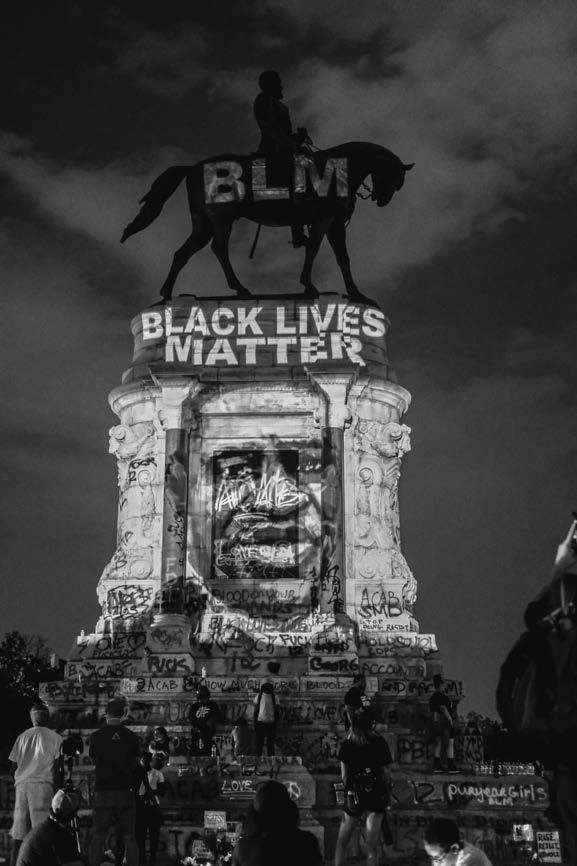
power to structure the experience of place. They seek to reclaim space for a just organization of society.
Not everyone, of course, agreed these symbols should go. In Chicago, when protesters, many of them Black, Brown, and Indigenous young people, rallied against the statue of Christopher Columbus in Grant Park—some attempting to topple it—an enormous police presence swarmed to meet them. Cops pepper sprayed the protesters, pulled them off bicycles, slammed them to the ground. An officer punched a young woman, Miracle Boyd, and knocked one of her teeth out. Events like these raise questions of their own: Is there more to this police
FIGURE 0.1
Image of George Floyd projected onto the statue of Confederate Gen. Robert E. Lee, Richmond, Virginia. Projection by Dustin Klein. Photo by Sandra Sellars. Richmond Free Press, June 2020.
response than a simple defense of public order? What role do monuments play in creating that sense of order? Why do they provoke such heated attacks and such vigorous defenses? The protesters assert through words and deeds that these statues create and maintain conditions in which White supremacy flourishes, in which police violence goes unchecked. While different cities have had varying reckonings with these questions, protesters and police alike see these monuments as key to the symbolic order and to control over space. “Whose streets? Our streets.”
A confrontation with the history of race in America has been long in the making, prepared and signaled in the work of numerous activists, scholars, and artists and writers in many media. One of the ways in which this reckoning has played itself out has been in the undoing of monumental statues that, for decades, staked out public space all over the United States. From the perspective of racial justice, what unites these monuments, whether they are dedicated to Christopher Columbus or George Washington or Robert E. Lee, is the violence these historical persons perpetrated on Black and Indigenous people. To monumentalize, from this perspective, perpetuates that violence, erases their crimes, and props up Whiteness—and male authority—in particular. To other observers, even some who think the men they depict are not actually admirable, these objects are worth saving simply because they are works of art—or because of the stories they tell about historical events, about artistic achievements, or even about the racism and patriarchy that produced them. How do we make sense of these differing positions?7
First, it’s worth acknowledging that public monumental sculpture and its ubiquity in certain kinds of places contributes to our sense of what public space is. In many locations, statues help define civic space as such. They elevate it out of the realm of the ordinary spaces that afford us passage, that serve merely as convenient or inconvenient containers for our travel from home to work or leisure or shopping and back again. Monuments create an affirmative notion of public space that claims to have meaning and produce identity. And by design, monuments give the impression of having been here so long that it might as well be forever. Their presence suggests permanence, durable memory, continuity. Their traditional styles and materials—traditional for Europe and EuroAmerica, at any rate—seem to connect the United States to an even longer history, that of the statues of classical antiquity, Greece and Rome. Statues of rulers and heroes, gods and generals, they stand in a long and apparently seamless tradition.
This is an illusion, of course: each statue results from the concerns that drove its creation at a moment in time. Monuments to Confederate generals, in the main, emerged out of the politics of Southern White racial revanchism at very particular moments. They were, as M. M. Manring puts it, “a way of interpret-
ing the ‘Old South’ as a whole forming a public memory of a time, social order, and place.”8 To understand their effects, we have to contend with the histories of how these monuments were placed. According to a 2019 report by the Southern Poverty Law Center, “spikes” in the creation of monuments in the South, and the use of names, symbols, and iconography of the Confederacy, occurred in two distinct and historically significant moments: “The first began around 1900 as Southern states were enacting Jim Crow laws to disenfranchise African Americans and re-segregate society after several decades of integration that followed Reconstruction. It lasted well into the 1920s, a period that also saw a strong revival of the Ku Klux Klan. Many of these monuments were sponsored by the United Daughters of the Confederacy. The second period began in the mid-1950s and lasted until the late 1960s, the period encompassing the modern civil rights movement.”9 Within debates about their continued existence, some commentators—ostensibly sympathetic to the concerns of protesters—worry over the loss of “history” if statues are removed. But understanding how these campaigns of monument creation arose out of the politics of their moment, and how they served as a display of symbolic dominance, gives the lie to the notion that they neutrally represent history. The choice of particular statues does not merely allow for the telling of stories about history. They erase other histories that could have been represented, that might have told a different story. They say whose history matters; they communicate messages about who is held to belong in public space; and, when contested, they point us in the direction of which mythologies will be protected.
Moreover, even when the person honored by a given public statue does not give particular offense, the form itself is not neutral. Equestrian statues of generals, stiff and solemn men stuffed with their own importance, allegorical figures in antiquated garb—all these hark back to European types. This suggests not one but two forms of conquest. In Europe since antiquity, statues served as a form of virtual conquest, representing the power of gods and rulers whether in far-off places or at home. Their public placement puts them in the company of triumphal entries by which rulers represented conquest not only over lands they conquered militarily but even over their “own” cities.
One could argue that in the modern United States, we’ve neutralized this sense of conquest by devoting monumental statues to people we respect and admire who are not “conquerors” or rulers at all, and certainly not gods. And yet here precisely is where the second form of conquest comes in. The very fact that these are European forms should force some questions. Why and how did traditions of European art and architecture come to dominate the public visual culture of this land? To think about these questions we need to think beyond the idea of the monument. I will argue in the pages that follow that we need to think ourselves further back in history than the Confederate monument campaigns
to consider what the term “art” and its affiliate terms meant in conditions of early, slaveholding settler colonialism and how they have traveled through time to continue constructing how we imagine land, culture, community, and public space today.
Part of this imagination is how we understand our own identities. You may have already noticed that I’ve made a decision in this book to capitalize the word “White” when using it as a racial identity. As a White woman I do this not without some discomfort—the worry that the very use of the capital letter might appear to affiliate me with Far Right identitarian movements that also use a capital W. Yet I court this discomfort intentionally. As Eve Ewing argues, to leave only “white” as a lower-case term “runs the risk of reinforcing the dangerous myth that White people in America do not have a racial identity.”10 To capitalize the word, on the other hand, is to insist on marking an identity that typically goes unmarked, that often constitutes a norm from which others are held to deviate, that invisibly accrues benefits. It also reminds us that this identity, like others, is constructed and reinforced by many acts, large and small, and by institutions—including, and this is my argument throughout much of this book, the institutions of art and art history.
ART, NATURE, RACE, AND PLACE
The specific spaces that harbor these controversial statues can be ordinary streets and squares, in downtown areas or on the outskirts. Very often, such monuments are found in green spaces—liminal zones, parks and parkways that punctuate streets and represent “nature” in the city. The Columbus statue’s empty pedestal now stands surrounded by greenery in a spot at the southern edge of Grant Park, on the path that leads directly to the Field Museum, Chicago’s natural history museum.11 The placement of monuments in parks reflects the garden design of early modern Europe, but its persistence wasn’t a foregone conclusion. In a 2001 essay in the New Yorker, “Sowers and Reapers,” Jamaica Kincaid describes the experience of participating in a panel discussion on gardens at the Charleston Garden Conservancy in South Carolina. Kincaid had prepared a different talk entirely. But after a previous speaker on her panel brought up a garden made by prisoners in the Holocaust, she was moved to talk about the statue of John Calhoun, defender of slavery and inventor of the rhetoric of states’ rights, that she had noticed in the park across from the hotel where she was staying for the event. After the event, her host confronted her, demanding to know why she had “introduced race politics into the garden.”
Why, Kincaid then reflects, “must people insist that the garden is a place of rest and repose, a place in which to distance yourself from the painful responsi-
bility that comes with being a human being?”12 Rest and repose, of course, come more easily to those whose identities are fed and caressed—or just not troubled— by past decisions about who should be honored in such spaces. But gardens may be unquiet spaces for many who traverse them. These situations are not just incidental: when monuments make their home in green space, we can see in miniature the pairing of “art” and “nature,” two terms whose oppositions, overlaps, and alliances constitute a key theme of cultural history. If statues represent power over the landscape, they tell us who holds that power.
When I said that parks represent nature in the city, I meant that they carry a symbolic allusion to nature. They are, of course, highly constructed and not “natural” at all. Take, for example, the land where Chicago’s Columbus statue stood. Grant Park sits atop landfill that was created after Chicago’s Great Fire of 1871 by offloading debris from the buildings destroyed by fire into Lake Michigan. In 1914 the Pokagon Band of Potawatomi filed suit in Federal District Court to seek the return of this territory, which was not formally ceded in the Potawatomi’s 1833 treaty with the US government because it was not, at that time, land. The case eventually made its way to the Supreme Court, which ruled that the Potawatomi had “abandoned” the land. As the Settler Colonial City Project puts it, “In forcing the Supreme Court into an absurd argument—that nonexistent land could be abandoned—the Pokagon Potawatomi revealed the way in which United States law was structured by settler colonialism and the distance of both law and colonialism from an ethical relationship to land.”13 The statue of Columbus, erected in 1933, faced Columbus Drive, which runs on the north–south axis smack dab in the middle of the landfill area. In its overt artificiality— constructed territory—this example illustrates well the fact that green space is not natural. And not only is it not natural, but it also commonly reflects the politics of land use and land ownership—in this case, in especially pointed ways. It speaks to the role art has played in carving out spaces for something called “civilization” that presents itself as timeless in the garb of European artistic styles.
The dyad of art and nature, both a pairing and an opposition, derives from European ideas, and it found new manifestations in Europe’s colonial projects. In the nineteenth-century US, artists and writers made claims for the special role of nature in the formation of the new nation through art, in what Angela Miller has called the “instrumentalization of nature as the raw material of American empire.”14 The painter Asher Durand’s famous “Letters on Landscape Painting” twinned the artistic authority of nature as a teacher of artists with the “native” land of America—claiming Nativeness, that is, for the descendants of European settlers.15 The pairing of art and nature served as a tool of the essentially colonial project of controlling land and access to it. To understand this argument requires taking seriously the idea that White supremacy, with its sturdy pillars in the form of settler colonialism and slavery, was a foundational structure of
US national identity: national identity as a racial enterprise. White supremacy in this sense is not a matter of white hoods and burning crosses; it is the business of racemaking central to the very constitution (and Constitution) of the United States. This implies certain ways of thinking about history: while a liberal school of thought that favors the expansion of civil rights and of equality of opportunity might imagine US history as a matter of progressive improvement upon flawed but promising foundations, another more radical position sees the very institutions charged with carrying this progress forward as thoroughly and irremediably imbued with the acts of dispossession and dehumanization that allowed them to come into being. When I mention institutions, I mean to allude to the museum and the university as much as the more obviously governmental institutions established by the United States Constitution. As long as “we the people” remain on this land, is it possible for this history to be transcended? At the very least, “we” have to grapple with it.
What would it look like for art to operate differently in public space? Alongside experiments in abstraction and performance in public art, and activist interventions to reclaim space, artists have expanded the possibilities for who can be commemorated in monuments or monument-like objects. In The Lure of the Local, Lucy Lippard gathers together a body of work by artists who took an interest, in the 1980s and 1990s, in “representing the historic in avant-garde forms,” forging relationships between “past and present in place.”16 For example, Sheila Levrant de Bretteville’s 1991 Biddy Mason: Time and Place in Los Angeles is a wall installation that uses both abstract and representational relief imagery to chronicle the life of a Black woman who was born in slavery and traveled to the West Coast, becoming a midwife and real estate entrepreneur. Judith Shea’s 1994–95 The Other Monument took a different approach, responding to an existing equestrian monument at the edge of Central Park in Manhattan with a “shadow” wooden monument in a folk art style.17
Given how comprehensively monuments in traditional styles honoring White men dot the landscape, collective projects seem to have the best chance at making a difference. In the 1990s in New York, REPOhistory installed alternative monuments and historical markers that push back against the traditional monument narratives. Suzanne Lacy’s installation Full Circle, part of the 1992–93 project Culture in Action in Chicago, dedicated rough-hewn boulders sourced from a woman-owned quarry to a multiracial group of one hundred Chicago women, present and historical.18 The temporary intervention dotted downtown streets, making the point that Chicago has devoted only a tiny proportion its many monuments to women. More recently, groups like the New Orleans Committee to Erect Historical Markers on the Slave Trade; the Equal Justice Initiative in Montgomery, Alabama, and its National Memorial for Peace and Justice; and Ogimaa Mikana: Reclaiming/Renaming in Ontario, Canada, have begun similar
work.19 The Philadelphia organization Monument Lab has sponsored conversations and commissioned public artworks that call traditional monuments into question while raising political questions about representation and justice.
Some works straightforwardly redress historical absences and myths; others seek to redefine what a monument is. Some monuments might be classed with the German public installations recognizing the Holocaust that the historian James E. Young has termed “counter-monuments,” created by artists who reject traditional monuments that honor historical figures or claim to repair or redeem past wrongs. “Instead of searing memory into public consciousness,” these artists and artworks suggest, “conventional memorials seal memory off from awareness altogether.” The alternative is to create works “whose primary function . . . is to jar viewers from complacency and to challenge and denaturalize the viewers’ assumptions.”20
Artists’ projects that we can call “critical monuments” have reckoned specifically with symbols of American history. A temporary outdoor installation, Abigail DeVille’s Light of Freedom responded directly to the political events of 2020. It was inspired by photographs of the Statue of Liberty as it was displayed in pieces in the years before it was finally fully installed on Ellis Island in 1886. During this process, a disembodied hand holding a torch was put on view at the 1876 Centennial Exhibition in Philadelphia and then on a pedestal in Madison Square Park in New York; other old photos show the statue surrounded in scaffolding. In DeVille’s statue the torch is filled with a rusted metal bell and the blue arms of mannequins and surrounded by a golden scaffold, suggesting the sense of freedom as something that is continually in progress and requires work to attain. Entering into pressing questions about monuments, whom they honor, and whom they welcome into public space, DeVille also imagined the statue as a monument to the lives of Angolan people who were brought to New York and enslaved by early Dutch settlers. Following its appearance in Madison Square Park, the statue moved to the National Mall, where it was installed in the outdoor sculpture garden of the Hirshhorn Museum.
Not all critical monuments exist in outdoor public spaces. Alan Michelson designed his 2018 Hanödaga:yas (Town Destroyer) (fig. 0.2) to stand in a museum space, but it directly addresses the relationship of monuments and historical landscapes. In the piece Michelson projects historical imagery—maps, documents, paintings, and prints—onto a replica of Jean-Antoine Houdon’s portrait bust of George Washington. The work takes its title from the Haudenosaunee (Iroquois, or Six Nations Confederacy) name for Washington, Hanödaga:yas. The name translates as “town destroyer,” a title he inherited from his greatgrandfather, who murdered several chiefs during Bacon’s Rebellion; Washington went on to earn the name himself through the brutal military campaign he waged against the Haudenosaunee during the Revolutionary War, in which his
FIGURE 0.2
Alan Michelson, Hanödaga:yas (Town Destroyer), 2018. HD video, bonded stone Houdon replica bust, antique surveyor’s tripod, artificial turf. 75 × 72 × 72 in. (190.5 × 182.9 × 182.9 cm). Sound: members of Six Nations of the Grand River Territory.
armies destroyed upward of forty villages and all their crops in the ground. The video projection is accompanied by an audio track consisting of the sound of a traditional Haudenosaunee water drum and rattle, followed by individual members of the Six Nations of the Grand River (Michelson is himself a Mohawk member) reciting each language’s version of the name Hanödaga:yas. The bust sits atop an antique surveyor’s tripod that rests on artificial turf, alluding to Washington’s work as a land surveyor and speculator, through which he helped construct the legal groundwork for the westward expansion of European colonists’ settlement and the seizure of Haudenosaunee homelands—acts also facilitated by the devastating military campaign.21
Alongside new artworks that critique past monuments and their traditions, removal and destruction also constitute a form of critique that we should take seriously. It is important to preserve knowledge of history, but specific artifacts in public places don’t necessarily have a right to continue to exist there. Art his-
tory often holds to a precept that artworks must be understood within “their” historical context—a context to which they are thought firmly to belong. 22 This sometimes translates into a conservative position that enforces the preservation of monuments by minimizing the failings and misdeeds of historical figures. Standard historical and art historical methods demand that we not impose our prejudices on the past. Yet in this case—and perhaps others—it becomes especially important to understand the persistence of the past in the present. A decolonial position would push us to think forward and backward in history, refusing to use “context” to cordon off the past but rather to observe how the past continues to inflect the present.
I use the term “decolonial” advisedly. My thinking here has been shaped by the work of Eve Tuck and K. Wayne Yang, who argue in an influential scholarly article that decolonization “is not a metaphor.”23 While I am decidedly unsure that I can measure up to the demand of true decolonization, I have tried to reckon with the challenging positions of Tuck and Yang and with many other thinkers, particularly Black and Indigenous artists, writers, and scholars, who make claims on behalf of those historically dispossessed of land, freedom, and their own bodies. 24 For many of us, especially White people, especially those who love art, it can seem an impossible task to pitch in to dismantle the structures of oppression. And if we fear what we might be losing, what might be at risk? How will we see the canonical works of European and American art in light of their function within settler-colonial institutions and subjectivities? Would we leave institutions, histories, even the pleasures of art in tatters? Shall we do away with the very concept of art, to restate a question Carolyn Dean asks in “The Trouble with (the Term) Art”?25 Should we radically change our institutions—museums, art schools and universities, the habits of art consumption?
I can’t answer these questions honestly with a simple, “No, this doesn’t mean that at all.” Art—understood as European art or forms of art based in European traditions of painting, sculpture, and architecture—and its discourses have participated in the racially charged construction of territorial sovereignty in North America. But can contemporary artists and culture workers make theoretical interventions that can substantively address this history? We can imagine preserving joy in creation, in collaboration, in finding ways to express ideas, simple pleasure in working with the materials of art, the modes of thoughtful reflection that it prompts—and, in the context of these political claims particularly, the inventive forms of political contestation that artists can make. For those to whom these ideas are new, it might mean forming one’s mouth around some words that feel strange and uncomfortable and wrapping one’s mind around the corresponding concepts. For example, I do my best here to use language in a way that does not equate captive people whom others have enslaved with “slaves”— implying in Aristotle’s terms that they are “slaves by nature”— and enslavers with
“masters” who might “give freedom,” as if beneficently, to their captives. That this runs counter to some of the conventions of the English language demonstrates how deeply ingrained in the language the rationalization of slavery is. 26 We have to cast aside all assumptions and take seriously how Art with a capital A has served as White supremacy’s tool. And finally, we must listen to voices and ways of thinking that have been cut out of national dialogues and barred from cultural institutions.
RACIAL ENTERPRISE, RACIAL ECOLOGIES
In this book I think specifically about how the entanglement of art with the idea of nature—as representation of it and foil for it—bear upon human and nonhuman ecologies in this particular colonial context. In her long essay, “Unsettling the Coloniality of Being/Power/Truth/Freedom,” Sylvia Wynter addresses the idea of nature as a sphere separated from human beings and governed by its own laws. This understanding of nature came to stand in, in post-Reformation, colonial-era European thought, for the extrahuman authority constituted in the middle ages by God and God’s laws. 27 Wynter argues that the idea of human beings as independent from a rule-bound entity called nature, and hence as privileged observers of it, was actually the tool of the divisions created by the colonial worldview, along with the formation of the natural sciences (encompassing the idea of politics itself as a science). In this view the European Renaissance constructed a notion of the human in such a way as to establish boundaries that define and exclude nonhuman nature and non-European humans, together. As part of this shift, the idea of natural laws imposed a divide between European “Man” and all other humans as the rationale for colonial exploitation and slavery that could no longer be justified through Christian ideology.
As the issue of climate change and others relating to environmental degradation have pressed on public consciousness more insistently, the art world has given renewed attention to artists whose work engages directly or indirectly with ecological issues.28 Some art practices make direct interventions into nonhuman nature, while others attempt to change humans’ consciousness around environmental issues, creating new ways of conceptualizing nonhuman nature. And to pick up on the line of thinking that Wynter proposes, the work often overlaps with the concerns of the environmental justice movement, which addresses environmental inequities between human social groups, particularly with respect to race and class-based injustices.
The discourse of ecology and environmentalism, we must bear in mind, is also deeply intertwined with American racial formation. The idea of “environment” has often manifested in particular ways with respect to urban and poor
Americans, to refer to social and not “natural” environments. This is the invidious question of “genetics” versus “environment” with respect to personality, behavior, and intelligence: invidious because the assumptions that animate even the “progressive” position in these debates are themselves generally racist. And already in the 1970s, scholars and activists whose point of departure was racial and social justice critiqued conservationist environmental discourses that emphasized leisure activities (say, clean water for swimming and boating) while purporting to be universal and “color-blind.” Meanwhile, conservation discourse ignored problems of the toxicity of urban environments and even seemed to “regard the presence of Blacks as a kind of pollution,” as the sociologist Nathan Hare put it. In his 1970 essay “Black Ecology,” Hare wrote that “the ecological ordeal of the black race does not have to wait for a nuclear attack; present conditions are deadly enough.”29 He cogently addressed the ways in which prevailing ecological and environmental discourse failed to address the concerns of Black communities and urban environments. As ecological concerns come to the fore with the prospect of ecological disasters to come, as environmental hazards repeatedly map onto and intensify social inequality, activists continue to raise the question of the vulnerability of marginalized populations to toxic and damaged environments and catastrophic environmental change. If the American landscape is fraught for descendants of enslaved African people, it is also fraught, in different ways, for Indigenous people and nations whose sovereignty is bound up in their historical relationships to the same land. American environmental ideology has tended to freeze Native people into roles of service, as primitive founts of wisdom—as in the famous “crying Indian” ad of the 1970s Keep America Beautiful campaign, which featured an Italian actor who made his career playing Native roles. The myth of the “ecological Indian” assumes that Indigenous people’s relationship to the land will closely track with mainstream society’s notion of “good” environmental ethics—which might, for example, emphasize wildlife protection over hunting despite the latter’s cultural significance.30 A life embedded in relations with nonhuman beings might look quite different from a modern conservation ethos. While sovereignty and environmental concerns can be deeply connected, in movements like the defense of Standing Rock and the #NoDAPL movement, non-Native allies often had to be reminded not to slip into giving priority to the ecological issues while glossing over Indigenous land rights and self-determination.
American environmental conservation ideology often would have it that “nature” must be maintained (in certain specific places) unspoiled by human touch—yet ever-present for the purpose of human leisure. But what happens when we take into account the violence associated with the “great outdoors,” the violence required to make it (to clear the land of its Indigenous inhabitants) and the violence conducted there, the sense that the outdoors has also been charged
with fear and pain? In Tiana Clark’s poem “The Ayes Have It,” part of her collection I Can’t Talk about the Trees without the Blood, she writes, “So when I think about a post-racial America, I don’t— / because the trees in the South have strange fruit histories, / the roots are deep red, tangled and gnarled . . .”31 How can we make sense of a “nature” harnessed to murder, trees that bear “strange fruit,” as in the Billie Holiday song, whose roots are tangled in bloody histories? 32 In “What the Blood Does,” Clark alludes to a lynching picture that “slips under a lake like silt”—the spacing lets us imagine the time it takes to disappear—and then she writes,
I see trees, but they look like men, hanging. I see men, but they look like trees, walking (on fire)
Clark’s poem suggests ambiguity between trees that look like “men, hanging” and men that look like “trees, walking”—a sympathy between human beings and the nonhuman world rather than an opposition.33 The literary scholar Katherine Lynes has coined the term “reclamation ecopoetry” for poems that “[reassert] a relationship or connection between early African American poetic expressions of nature and human environmental concerns and those same expressions in contemporary poetry.”34 A prime example for Lynes is Paul Lawrence Dunbar’s poem “The Haunted Oak,” published in 1900. Dunbar animates an oak tree used for lynching, speaking in its voice of the damage it suffers in being pressed into participation in murder: “I feel the rope against my bark, / And the weight of him in my grain, / feel in the throe of his final woe / The touch of my own last pain.” As Lynes points out, Dunbar’s poem “calls into stark relief the difference between those humans and human groups who may more safely inhabit the natural spaces within the nation and those who may not.”35 Sometimes, perhaps, a tree is just a tree. But for many inhabitants of the Americas, the ancestral history of American violence tinges the livable and imaginable possibilities of outdoor spaces and “nature.”
Visual artists, too, have made such divergent experiences of green spaces particularly concrete: for example, Brittney Leeanne Williams’s Leisure and the Unseen series (plate 1) presents subtle, half-hidden imagery of lynching or murder looming at the margins of brightly colored scenes of White people’s enjoyment of the outdoors. We know that White crowds of the early twentieth century treated lynchings as a form of entertainment and social event. This isn’t exactly the case here. The White figures here simply remain cheerily oblivious to the evidence of violence as they eat and drink alfresco, insulated from the painting’s own insights. Yet the echoes of “Strange Fruit” are palpable. “Pastoral
